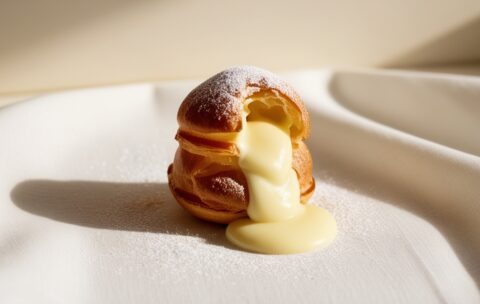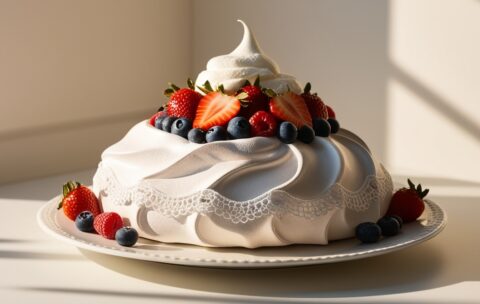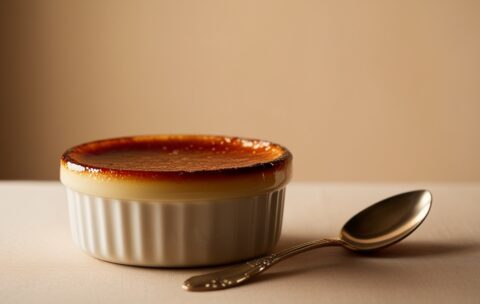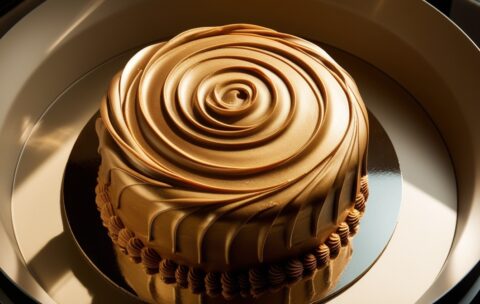Popular Topics
Baking
Vanilla
Passion Fruit
Mascarpone Cream
Pastry Dough
Apple Filling
Flaky Pastries
Specialty Coffee
Tropical Flavors
Dessert Tutorial
Easy Recipe
berry desserts
Pastry Techniques
Cinnamon & Spice
Texture Control
Layered Dessert
Ladyfingers (Savoiardi)
Cake Decorating
Creamy Custards
chocolate desserts
Flambé Desserts
Chocolate Fondant
whipped cream
Tableside Presentation
Edible Gold Dust
Fine Dining at Home
homemade ice cream
Tart Baking
Graham Cracker Crust
Sour Cream Topping
French Dessert
gradient effect
Honey Cake
Berry Jam
Sweet Sauce
Cake Decoration
Chocolate Sauce
mousse techniques
Meringue Dessert
Individual Servings
Fresh Fruit Topping
Baking Techniques
Breakfast & Brunch
Elegant Sweets
frozen layers
Exotic Fruits
Italian cuisine
Dessert
Gelatin-Based Desserts
Tiramisu Technique
Dessert Recipe
Homemade Sweets
Professional Pâtisserie
Orange Sauce
Gourmet Baking
Classic Dessert
Pavlova
Cream Cheese
Popular Instructors
All Dessert Courses
What you'll learn
Custard Fundamentals (Paragraph):
You’ll discover how to create a smooth, silky custard by properly tempering egg yolks and controlling oven temperature during baking.
Flavor Infusion (List):
Selecting and preparing vanilla beans vs. extract
Balancing sugar and cream ratios for optimal richness
Incorporating subtle flavor variations (e.g., citrus zest, liqueur)
Caramelization Technique (Paragraph):
Master the process of evenly sprinkling sugar over the cooled custard and using a torch (or broiler) to achieve a perfectly caramelized, glass-like crust without burning.
What you'll learn
Ingredient Selection & Ratios: Identify the best types of cream cheese, sour cream, and eggs; calculate the ideal proportion for a dense, creamy texture without greasiness.
Crust Preparation: How to toast and bind graham-cracker crumbs using melted butter and a hint of sugar; press evenly to create a sturdy, flavorful base.
Mixing Techniques: Beat cream cheese to a smooth consistency, incorporate sugar gradually, and fold in eggs and dairy to prevent overmixing and air incorporation that cause cracks.
Water-Bath Baking: Set up a proper bain-marie—wrapping the springform pan, positioning in the oven, and monitoring water level—to ensure even heat and prevent browning or cracking.
Cooling & Setting: Techniques for gradual temperature reduction—oven-off resting, room-temperature cooldown, then refrigeration—to minimize shrinkage and produce a flawless top.
Flavor Variations & Toppings: Simple ways to add lemon zest or vanilla bean for subtle notes; recipes for fruit compotes (strawberry, blueberry) and ganache for elegant finishes.
Troubleshooting Common Issues: Solutions for cracked tops, soggy crusts, and overly dense fillings; learn how small temperature shifts or mixing errors impact final results.
What you'll learn
Espresso Preparation & Soaking Technique (Paragraph + List):
You will master brewing strong espresso (or concentrated coffee) and learn how to quickly dip ladyfingers to prevent soggy layers.
Selecting grind size and brew method for intense flavor
Timing the dipping process: just enough to infuse coffee without collapsing the biscuit
Balancing sugar in coffee liquid to sweeten subtly
**Mascarpone Cream Assembly (Table):
Step Key Tip
Whipping Egg Yolks & Sugar Whisk until pale ribbon stage for stability
Folding Mascarpone & Cream Use gentle motions to maintain airiness
Flavor Infusion Add a shot of coffee liqueur or vanilla
This table highlights how each stage contributes to a smooth, stable cream.
Layering & Chilling (Paragraph):
Learn to create uniform layers—alternating soaked ladyfingers and mascarpone cream—then chill for at least 4–6 hours (or overnight) to allow flavors to meld and set properly. Presentation tips include smoothing the top layer and evenly dusting cocoa powder.
Variations & Garnishes (Bullet List):
Fruit Twist: Add a layer of fresh berries or fruit compote between cream layers.
Chocolate Shavings: Sprinkle dark chocolate curls on top for visual contrast.
Alcohol Options: Use Marsala, rum, or coffee liqueur to deepen flavor.
What you'll learn
Ingredient Harmony
How honey interacts with flour, eggs, and spices for moist crumb.
Balancing baking soda and acidic components to ensure proper rise.
Mixing & Resting
Techniques for creaming butter, sugar, and honey without overmixing.
Importance of resting batter to develop flavor.
Baking & Texture Checks
Identifying doneness via toothpick test vs. spring-back method.
Preventing dryness through temperature control and timing.
Presentation & Serving
Simple glazing ideas and dusting techniques.
Pairing suggestions (e.g., whipped cream, fresh berries).
Syrniki with Sour Cream and Berry Jam
Syrniki are traditional Eastern European cheese pancakes made from fresh …
What you'll learn
Choosing & Preparing Cheese
How to select the right fresh farmer’s cheese (tvorog or quark) for optimal moisture and texture.
Techniques for draining excess liquid to avoid overly wet dough.
Dough Formation & Consistency
Balancing ingredients—cheese, eggs, flour, and a hint of sugar—to achieve a tender but firm pancake batter.
Adjusting flour amounts based on cheese moisture to prevent stickiness while preserving fluffiness.
Shaping & Frying Techniques
Forming uniform rounds without overworking the dough, ensuring even cooking.
Controlling pan temperature and oil quantity for a crisp exterior and soft interior.
Accompaniments & Serving
Preparing sour cream to the right consistency—stirring in lemon zest or sugar if desired.
Selecting or making berry jam (strawberry, raspberry, or mixed) to enhance sweetness and color contrast.
Plating strategies that showcase the contrast between golden syrniki and vibrant toppings.
Flavor Variations & Customizations
Ideas for adding vanilla, citrus zest, or cinnamon directly to the batter for subtle flavor boosts.
Alternative toppings such as honey, fresh fruit slices, or nut butters.
Berry Gradient Ice Cream
Berry Gradient Ice Cream is a stunning multi-layered frozen dessert …
What you'll learn
How to prepare and strain fresh berry purees for a smooth texture
Techniques for building distinct, colorful layers without mixing
Tips on freezing timing between layers for clean separation
How to balance sweet, tart, and creamy flavors across layers
Proper slicing and serving methods to highlight the gradient
Creative ways to present and garnish layered frozen desserts
What you'll learn
Techniques for cooking crêpes evenly in a nonstick pan (temperature control, batter spread).
Steps to prepare an aromatic orange–butter sauce with fresh citrus zest and juice.
Proper method of adding liqueur and safely flambéing to develop caramelized notes.
Plating and folding options that highlight the vibrant orange sauce.
Tips for timing so crêpes remain warm and supple when served.
Ingredient substitutions (e.g., Cointreau or Grand Marnier, using mandarin or tangerine zest).

















